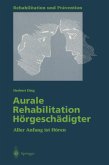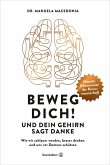Restoring motor functions has been an exciting yet frustrating research topic for the last several decades. While significant progress has occurred in the design, construction, and low level control of rehabilitation devices, researchers are up against fundamental problems in multi-sensory processing and motor control. The aim of this book is to explore parallels in sensorimotor integration of rehabilitation devices and human extremities, addressing the basic question on how the next generation of rehabilitation devices should evolve. By bringing together experimental physiology, kinesiology, rehabilitation therapy, computer and electrical engineering, this book discusses a range of issues starting from natural and ending with artificial control. While the ultimate goal of capturing able-bodied versatility remains elusive, this book makes an important contribution to a better understanding and design of future rehabilitation methods and devices via a simple underlying message: a to pic as complex as restoration of human movements would be best addressed by collaborative, interdisciplinary research, combining high level and low level views, drawing parallels between human studies, analytic and non-analytic approaches, and integrating sensory data with motor commands. The future will hold up the expectations only as researchers become aware of advances in parallel fields, and a common vocabulary emerges. This book has a large potential audience amongst both engineers and medics.








